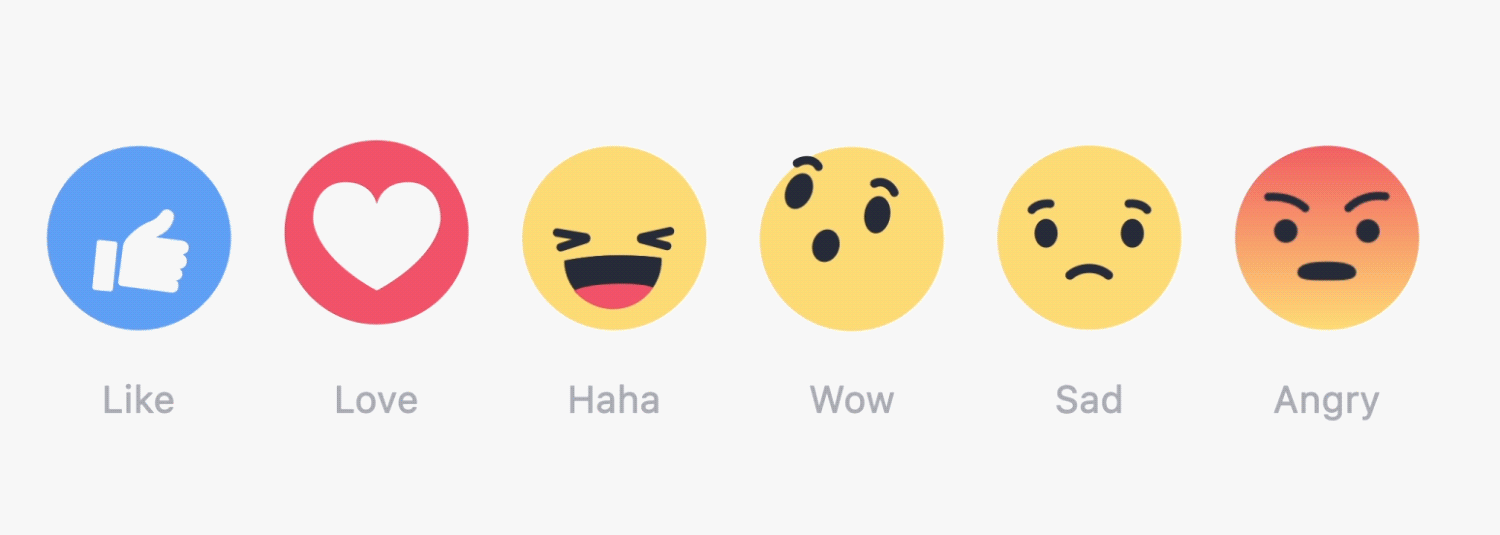What’s your take on Facebook’s new Reactions? This week, the social media giant went beyond the long requested “dislike” button when adding to their current “like” button. These new Facebook Reactions show a user’s “reaction” to a specific post. Users are now able to select Like, Love, Haha, Wow, Sad and Angry to express their opinion in response to the post. So what happened to the user requested “dislike” button?
Well, as it stood, the Like Button was an amazing data source for crafting a user’s newsfeed by providing Facebook with 6 billion Likes per day. The Like button was able to tell Facebook algorithms on how to distribute content unique to each user. In looking at a dislike button, it just didn’t cut it. In normal Facebook fashion, they took a request to the next level. Facebook hired a team of 5 data and behavioral scientists to figure out what emojis should be added to Facebook. At first it appeared that they would need hundreds of emojis to accurately show what users wanted to express, but the typical Emoji bank of 100 emojis just wouldn’t work for Facebook. They then set out to find the 5 basic emotions of Facebook comments, which resulted in their current offerings of reactions.
So, now that Facebook is a public company, you can usually follow every decision to the money… the ads. What do these “reactions” do for advertisers? Well, it provides instant feedback on posts, which will allow advertisers to craft their content and messages appropriately. For example, if a Political Action Committee (PAC) posts negative content and articles about their opposing views, an “angry reaction” is the desired outcome. If that same PAC then posts something supporting their views and they get lots of “likes”, “wows” and “loves”, they are then validated in their content choice.
With all of this new data, Facebook will soon be rolling out tools for advertisers to evaluate the new “reaction” data and improve (then hopefully increase) their marketing efforts on the platform.
Get ready for a wild ride folks, because Facebook just made it even easier for marketers to consider the site their number 1 marketing platform.
